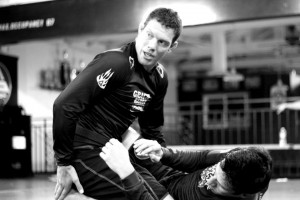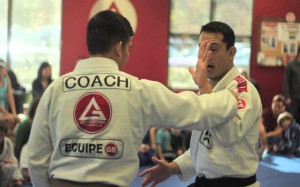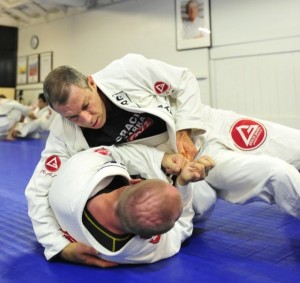The 5 Expressions of Brazilian Jiu-Jitsu
Have you ever thought about how Brazilian jiu-jitsu has many different facets depending on the situation in which one uses the art? The techniques and principles may be the same, but depending on the context, BJJ can be an art, a sport, or a means of personal self-defense.
1) Sport BJJ for competition
The IBJJF has developed a rule set and points system to reflect the positional hierarchy of BJJ. The points system encourages competitors to takedown the opponent, pass the guard, and achieve dominant positions (back mount & mount) in order to attack with submissions. Kimonos, time limits, categories according to belt level, and weight are all important parts of the sport BJJ aspect.
Traditional BJJ is BJJ taught in the kimono. Training with the kimono provides the greatest number of techniques – a vast number of chokes and strangles and maybe the defining characteristic of modern BJJ with the gi: the many different guards employing different grips and innumerable guard sweeps.
2) No-gi / Submission grappling
 A growing part of the sports competition aspect of BJJ is the no-gi aspect. Wearing rash guards and board shorts and spats enables those who also compete in MMA to test their skills with different grips than those afforded by the kimono. Often, the rule sets are slightly different – fewer restrictions on leg attacks for example, and an increasing trend towards submission only formats.
A growing part of the sports competition aspect of BJJ is the no-gi aspect. Wearing rash guards and board shorts and spats enables those who also compete in MMA to test their skills with different grips than those afforded by the kimono. Often, the rule sets are slightly different – fewer restrictions on leg attacks for example, and an increasing trend towards submission only formats.
Submission grappling tends to be faster paced and a little more wrestling influenced than BJJ with the gi. Without the gi grips to control an opponent, the matches can contain more scrambles and slippery escapes.
It is noteworthy that the largest no-gi competitions tend to be won by competitors who do the majority of their training in the gi.
3) MMA Jiu-Jitsu
Ever since Royce Gracie shocked the world by winning the early UFCs, BJJ has been synonymous with MMA to many practitioners.
Modern mixed martial arts have evolved greatly since the days of the single discipline fighter. MMA fighters must combine the separate disciplines of striking, wrestling, takedowns, and BJJ. When the threat of strikes are introduced into the equation, the MMA fighter must adapt their kimono grips and positions to protect themselves against an opponent’s strikes. At the same time, fighters may employ strikes to help set up their favorite submissions.
The most successful submissions in the modern era of MMA continue to be the ‘basic’ techniques of BJJ – the rear naked choke, guillotine and triangle choke.
4) Self-defense / street
 The majority of students who first step on the mat in BJJ claim that their primary reason is that of personal self defense.
The majority of students who first step on the mat in BJJ claim that their primary reason is that of personal self defense.
BJJ is perhaps the best martial art to equip a smaller, lighter individual to defend themselves against a larger, stronger opponent in potentially dangerous street encounters. Common situations are addressed with time and real-life tested techniques to escape holds like the head lock or bear hugs. Peace of mind and confidence result from the knowledge that one can protect oneself against aggressive individuals in the event of a street situation.
Helio Gracie considered self defense the most important aspect of BJJ and insisted that new students focus on the self defense aspect of BJJ.
5) Academy rolling
Initially attracted to BJJ after viewing a MMA event on TV or in search of a means of self defense, most practitioners discover new aspects to BJJ that are part of what is called the BJJ lifestyle.
Most practitioners decide to improve their diets to include more healthy foods with an emphasis on fresh fruits and vegetables. As the extra pounds start to drop off, increased physical fitness improves the practitioner’s energy levels, flexibility and endurance in all aspects of their lives.
For many, their favorite part of the academy training is the rolling at the end of class. Relaxed in regards to rules and time limits, the practitioners usually starting on knees, bump fists and try to catch their opponent with the new techniques just learned from their black belt instructor.
For those not interested in the competitions, training several times a week at the academy and the challenge of learning a new skill is the way they enjoy the art of BJJ.



Comments are closed.